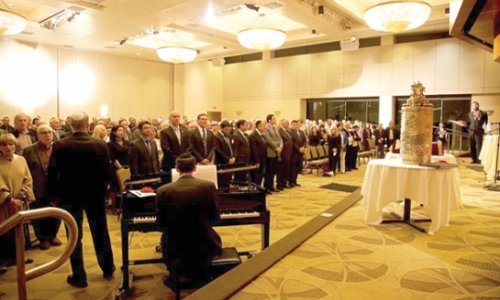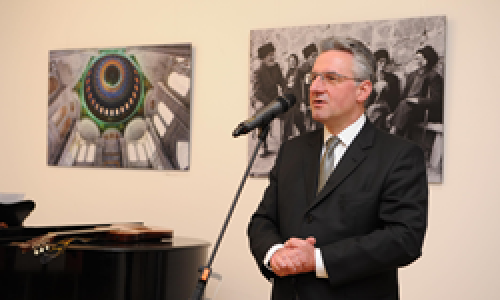(FT) - Baku, the capital of Azerbaijan, is experiencing a building frenzy to match a Gulf state. It has a new luxuriantly planted seafront esplanade, which emulates La Croisette at Cannes; and glossy hotels — such as Fairmont, Four Seasons, Hilton, Kempinski and Marriott — glint in the sun.
The building boom has been accelerated by this summer’s Baku 2015 European Games, the inaugural multi-sports event. All the stadiums are complete — or almost complete — apparently.
The new 68,000-seat National Stadium is an echo of London’s Olympic stadium — a bowl with inward sloping sides. The exterior is conceived as an ever-changing film and light show. Even more impressive, architecturally, is the newly adapted football stadium. The original structure was finished by German prisoners of war in 1951 and renamed in 1993 after Tofiq Bahramov, the linesman who gave England their crucial — and contentious — third goal in the 1966 World Cup final.
In contrast to Wembley, its twin towers have been preserved, retaining the giant octagonal windows for the commentators. There are Persepolis-style colonnades and stone staircases as monumental as those in Rome’s Coliseum. The new, glistening white, steel-lattice roof follows the crescent shape of the stadium — itself a homage to Stalin, as S in Cyrillic script is the shape of a Roman C. It will be used for archery.
With its waving ribbon canopies, the new National Gymnastics Arena is a delightful essay in architecture parlante. The 6,000-seat Aquatics Centre has a husk roof like a Brazil nut, echoing Japanese architect Arata Isozaki’s Palau Sant Jordi stadium in Barcelona; inside, the roof is supported by an intricate cat’s cradle of tubular steel supports — an engineering nightmare to build.
As with other buildings for the Baku Games none of the designers are big-name architects but design-and-build construction companies, mainly from South Korea and Turkey.
All this is part of an ambitious regeneration programme throughout the city, which includes new boulevards, expressways, bridges, flyovers, parks and promenades. Energy being cheap, the capital of oil-rich Azerbaijan comes alive at night, when almost every building is lit up. The Flame Towers — a trio of 30-storey towers completed in 2012 — were designed to resemble tongues of fire that glow red and gold in the evening, washed with flickering light evoking a giant bonfire. They celebrate both the oil of Azerbaijan and the country’s ties to the ancient religion of Zoroastrianism, followers of which believe that fire represents God’s light.
On a site east of the Old City stands Zaha Hadid’s Heydar Aliyev Centre. On a purely architectural level, rarely has expressionism so completely outfaced the laws of gravity. Any distinction between wall and roof disappears in rolling wavelike shapes likened to whipped cream. As you walk around the outside of the centre, the composition mutates with new heights and plunging slopes coming into view. Inside, almost everything is on the curve — even the steps on the grand staircase appear to melt into the walls.
Elsewhere, the city has an old town with Unesco world heritage status and belle époque mansions built by the Nobels and Rothschilds, who arrived with the oil boom in the late 19th century. Like Las Vegas, Baku has a mini-white marble Venice on the seafront with aquamarine canals and charming covered bridges featuring Gothic trefoil arches. Unlike Vegas, it also has huge Soviet-era government buildings. And there is a Secession-style opera house, built within a year in 1911 by the wealthy Mailov brothers to lure the great Russian soprano Antonina Nezhdanova to the city.
A fellow oil baron, Zeynalabdin Taghiyev, bet it would not be ready in time and when it was, he paid the entire bill. Baku is a city being rebuilt on the imperial scale of Moscow in the 1930s with six- or eight-lane boulevards and giant apartment blocks. Much of it has an Alice-in-Wonderland quality with constant changes of scale, bizarre yet intriguing surprises and great showmanship. It is exhausting and exhilarating in equal measure.
www.ann.az
Follow us !











